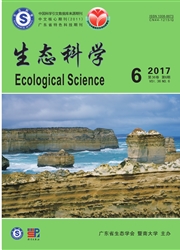

 中文摘要:
中文摘要:
采用实验室培养的方法比较了6种不同氮源—硝态氮、尿素、甘氨酸、精氨酸、谷氨酸、腺嘌呤对典型赤潮藻球形棕囊藻(Phaeocystis globosa)生长的影响。结果表明,6种氮源均能不同程度地促进球形棕囊藻的生长,但比生长速率和光合作用效率具有显著差异性。将球形棕囊藻在不同浓度氮源下的最大比生长速率分别拟合Monod方程,得出球形棕囊藻在硝态氮、尿素、甘氨酸、精氨酸、谷氨酸和腺嘌呤等6种氮源下的最大比生长率分别为1.05,1.17,0.82,0.87,1.09,0.90 d-1,相应的半饱和常数分别为9.132,23.758,85.519,7.104,23.94,10.959μmol/L。其中,高氮浓度(8 820μmol/L)下腺嘌呤对球型棕囊藻的生长具有显著抑制作用。相比较而言,球形棕囊藻对甘氨酸的亲和力最高。当硝态氮、尿素、甘氨酸、精氨酸、谷氨酸和腺嘌呤的浓度分别为8 820,882,882,8 820,882,0.441μmol/L时,球形棕囊藻的最大光合效率(Fv/Fm)分别为0.619,0.620,0.579,0.595,0.648,0.667。由此可见,氮源对球形棕囊藻的生长和光合作用具有显著影响;球形棕囊藻能够利用多种无机和有机氮源,与其它仅能利用无机氮源的浮游植物相比,更具有竞争优势。
 英文摘要:
英文摘要:
Growth dynamic characteristics of Phaeocystis globosa, a representative HAB species, as a function of six different nitrogen sources: nitrate, urea, glycine, arginine, glutamic acid and ATP, were examined in batch cultures. The laboratory results revealed that P globosa could utilize all the six nitrogen sources, and exhibited obvious concentration gradient effect. The maxium specific growth rates ofP. globosa under different nitrogen sources were fitted with Monod Kinetics, the result showed the maxium specific growth rates with nitrate, urea, glycine, arginine, glutamic acid, reached 1.05, 1.17, 0.82, 0.87, 1.09, 0.90 dl respectively, and the corresponding half saturation constants were 9.132, 23.758, 85.519, 7.104, 23.94, 10.959 μmol/L respectively. In comparison, Growth inhibition was observed in ATP culture with the highest nitrogen gradient 8 820 μmol/L, P. globosa showed the greatest affinity to glycine. The maximum photosynthetic efficiency reached 0.619, 0.620, 0.579, 0.595, 0.648, 0.667 respectively when the nitrogen gradient were 8 820, 882, 882, 8 820, 882, 0.441 μmol/L of different N-sources. These results suggested that the growth of P. globosa varies significantly with different N-sources, P. globosa could utilize various kinds of inorganic and organic nitrogen sources, thus providing P. globosa with advantage comparing to other algae utilizing dissolved inorganic nitrogen as the sole nitrogen source.
 同期刊论文项目
同期刊论文项目
 同项目期刊论文
同项目期刊论文
 Growth effects on mixed culture of Dunaliella salina and Phaeodactylum tricornutum under different i
Growth effects on mixed culture of Dunaliella salina and Phaeodactylum tricornutum under different i Allelopathic interactions between the red-tide causative dinoflagellate Prorocentrum donghaiense and
Allelopathic interactions between the red-tide causative dinoflagellate Prorocentrum donghaiense and 期刊信息
期刊信息
